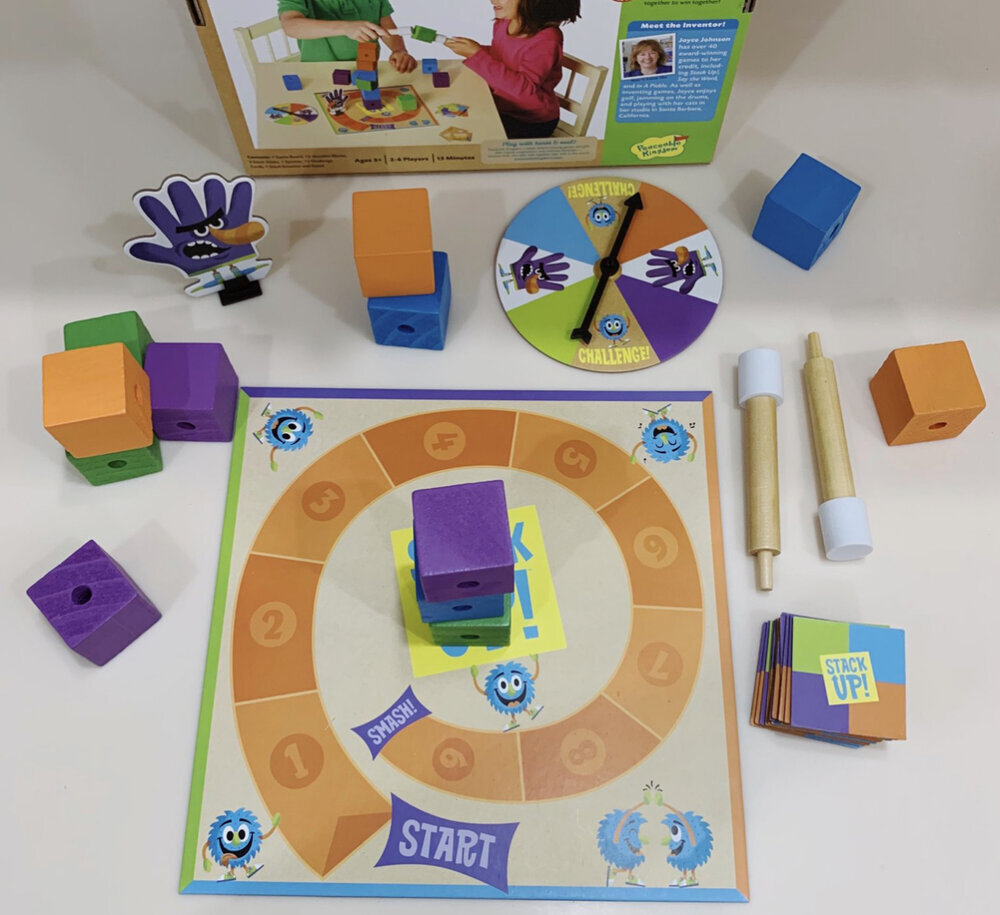Please note: I am a participant of the Amazon Services Associates Program and have included “affiliate links” for all the toys. This means that when you click the pictures or links provided and make a purchase, I receive a small commission on the toy at no extra cost to you. You can read more about the Amazon Associates Program here.
Cooperative play is a type of play where kids work together to reach a common goal. This can be helping each other win a board game (the kind where players play against the game instead of each other), strategizing to build the tallest castle out of blocks, or sharing ideas to create an art project. Cooperative play is less about winning or losing and more about working together to solve a problem. This is a more mature type of play that kids usually master by kindergarten.
Being able to play cooperatively is important for developing social skills and teamwork which results in friendships. It also helps kids practice leadership skills while listening to the ideas of others, a skill that will remain relevant throughout life.
Here are some ideas for ways you can encourage cooperative play in kids:
Provide many different opportunities to play with other children in a variety of settings. Whether it’s attending childcare at the YMCA, youth activities at a place of worship, or just playing with friends in the neighborhood. The best way to achieve any skill is through practice. Children learn the majority of social skills and self-regulation skills through play with peers.
Encourage both free play and games with rules such as board games. Both kinds of play teach different lessons about problem solving and teamwork. Free play allows kids to take charge and also enter into make believe worlds of others sparking their own imaginations. Games with rules on the other hand teach kids to follow directions and remain flexible.
Be intentional with providing opportunities for sharing and turn taking. For example when working on a craft project with peers, have only one pair of scissors or glue stick so that everyone can learn to wait their turn. The trick here is to start with something that kids can share quickly (kids can finish using a glue stick faster than scissors) to demonstrate to a child that they will get a chance to use the glue as soon as their friend is done without causing too much frustration initially. Once, a child is a reassured that their turn will come, they are more likely to remain patient.
You don’t need a whole bunch of toys when encouraging cooperative play because you want kids to focus and interact with each other. However, toys like puppets, blocks, and balls are all great for stimulating the imagination and leading to cooperative play so having one or two of them out can be helpful.
Talk about different emotions, such as happiness, sadness, and anger. Read books that teach about feelings, such as The Color Monster by Anna Llenas, or Positive Ninja by Mary Nhin. Help your child learn to identify emotions in himself and others.
6. When a child is playing with peers, be there to help if needed, but attempt to let children work out minor disagreements on their own. If they come to you with something minor, help them think of what can be done to solve the problem, rather than stepping in and taking care of everything.
7. Encourage empathy – if a friend has a problem, talk about how the friend might be feeling and what can be done to help them feel better. You can even role play different scenarios – one of you can pretend to be a friend who is feeling mad or sad, and the other one practices empathy by asking “What’s wrong?” or helping solve the problem.
8. Playing games that require taking turns is a great way to practice patience and delayed gratification. Incorporate age appropriate board games into playtime, with both family members and friends. Some of my favorite cooperative board games are Orchard and Stack Up!
9. You can also look into games that specifically teach social skills. Here are a few of our favorites:
Didax Social Skills Group Activities – This is a set of group activities designed to teach skills such as manners, empathy, and managing emotions. Children will enjoy navigating the real-world scenarios while they learn important social skills.
Color Monster Children’s Game – Players in this game help the Monster sort out his feelings by matching different colors to how he feels. This is a great game to help children practice naming different emotions, which is the first step to developing empathy.
The Game Plan – This board game teaches both social skills and life skills. Players help the fun characters solve problems about manners, emotions, as well as issues like bullying and personal safety.

